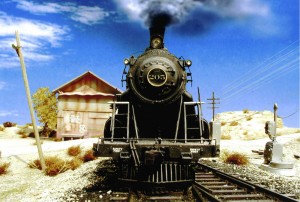
Saturday at work was slow so I had some time to research kit homes sold by Sears & Roebuck at the start of the 20th century. I was captivated by the romantic notion of a hardworking family realizing a dream of homeownership with sweat equity. Sears sold almost 100,000 of these kits until around 1940.
Home owners would visit a sales office and choose from many different plans then place an order with Sears. Several weeks later a kit consisting of thousands of parts would arrive at a rail yard. It was the customer’s responsibility to transport the house from the train station to their building lot.
While I fantasized about the notion of many trips by horse and buggy I hypothesized that technology has a symbiotic relationship with economic growth. Furthermore, technology is developed to fill a specific need. Forget about modern technology and take a trip back in time for a few minutes.
Economic growth of any industry is dependent on transportation and communication to and from other areas. Henry Ford, for example, could have sold cars only in the Detroit area and may have made a reasonable career. In order for him to truly thrive he needed to use transportation and communication to its fullest extent.
The automobile industry is really the core reason for many of the technologies of that era. Rail transport expanded to fill the need of increased demand for cars. At the same time telegraphs were implemented to allow communication between manufacturing plants, customers, and train stations.
Detroit is the auto capital of the United States. Many people don’t realize that cars are assembled from components built in other parts of the country. Upstate New York, Ohio, and Northern Michigan are a few of the locations manufacturing components. In the early part of the 20th century it was common to see the export of cars from Detroit and the import of parts from other areas.
Railway technology growth is due in large part to the demands of the automotive industry’s transportation needs. The growth of the rail industry allowed other companies (like Sears) to sell its wares. As miles of new tracks were laid down in response to demands by automobile manufacturers, Sears and other companies were able to reach more people with their products.
Let’s jump to the 1980’s and look at networking technologies. Sharing information has always been a critical function of any office at any time. However, it was the demand for sharing combined with the availability of newer low cost computers that created demands for networking and data sharing companies.
The eighties marked rapid expansion and the ultimate demise of many companies in the IT sector. No matter, the demand for sharing data was needed and a whole profession was created. Software was created for the same reason and the ability to share data was created.
Car manufacturers, among others, now had the ability to share data within manufacturing plants as well as across continents. Demands for growth created by the auto industry and other larger industries created new technologies. Those new technologies trickle down to help others.
What’s great about all of this is it allowed smaller companies and individuals to take advantage of new technologies that wouldn’t have been developed had they not been needed by bigger companies. Though technologies used by smaller companies may not be as complex, they still exist and are able to be utilized at lower levels. Let’s face it, by themselves smaller companies can’t create enough demand to justify the creation of brand new technologies.
(Jeromy Patriquin is the President of Laptop & Computer Repair, Inc. located at 509 Main St. in Gardner. You can text him directly at (978) 413-2840 or visit www.LocalComputerWiz.com.)